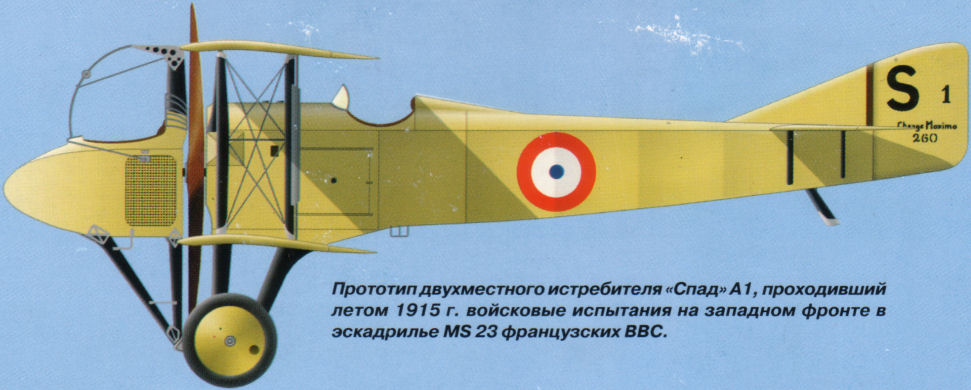В.Кондратьев Самолеты первой мировой войны
СПАД A1/A2/A4 / SPAD A1/A2/A4
Цельнодеревянный одностоечный биплан со смешанной обшивкой. В местах скрещения расчалок установлены дополнительные деревянные стяжки, соединяющие их с крыльями, из-за которых самолет выглядел как двухстоечный, но эти стяжки не несли силовой нагрузки, а предназначались лишь для предотвращения вибрации расчалок. Подобная схема бипланной коробки применялась на всех истребителях "Спад" периода Первой мировой войны.
Передняя часть фюзеляжа и гондола стрелка обшиты фанерой, остальное - полотном. Экипаж - два человека. Главная отличительная особенность машины - размещение стрелка-наблюдателя в отдельной кабине-гондоле перед винтом, благодаря чему достигался максимальный обзор в передней полусфере и широкий диапазон для ведения огня. Вооружение - подвижный пулемет "Льюис" на вертикальной полутурели. Для обеспечения доступа к двигателю гондола откидывалась вперед на шарнирах.
Автор проекта - главный конструктор фирмы Societe Pour l'Aviation et ses Derives (сокращенно - SPAD) Луи Бешеро. Первый полет прототипа самолета, названного "Спад" A1 и оснащенного 80-сильным ротативным двигателем "Рон" 9C состоялся 21 мая 1915 года. Аэроплан показал невысокие летные данные, тем не менее, схему машины поначалу сочли перспективной. Была построена небольшая серия в 11 штук, большинство из которых поступило на вооружение французских ВВС, а несколько экземпляров отправили в Россию.
Вскоре появилась усовершенствованная версия, названная "Спад" A2 с двигателем "Рон" 9J мощностью в 110 л.с. Самолет также отличался увеличенным размахом крыльев и видоизмененным капотом с изогнутыми по форме цилиндра алюминиевыми панелями на бортах. Летные данные машины повысились. Самолет построен в количестве 40 экземпляров, 30 из которых применялись французами на западном фронте во второй половине 1915 года.
Еще 56 штук были сделаны по российскому заказу. Внешне они выглядели как тип A2, однако на них установили моторы мощностью в 80 л.с. Эта "гибридная" модификация получила обозначение A4. Самолеты поступили в Россию в 1916 году, когда их моральная устарелость и низкие характеристики уже ни у кого не вызывали сомнений. Тем не менее, из-за нехватки вооруженных аэропланов, они применялись на русско-германском фронте в качестве истребителей и разведчиков до середины 1917 года. Этому способствовала малочисленность германо-австрийской истребительной авиации на восточном фронте (основные силы немцы держали на западе) позволявшая русским летчикам без особого риска использовать откровенно слабые машины.
Во Франции же от применения "Спада" A2 во фронтовых частях отказались уже весной 1916-го. Он оказался слишком медлительным, неповоротливым и тяжелым в управлении для ведения маневренного воздушного боя, а отсутствие защиты сзади и ограниченный сектор обстрела передней огневой точки делал почти невозможным ведение боя "по бомбардировочному" - за счет маневра огнем. Кроме того, размещение стрелка в передней гондоле оказалось чрезвычайно опасным и при капотировании машины он, как правило, погибал. Все это вызывало негативное отношение самолету со стороны экипажей и обусловило его быстрое снятие в вооружения.
А.Шепс Самолеты Первой мировой войны. Страны Антанты
SPAD SA.2 1915 г.
Проект этого самолета созрел у известного французского конструктора М. Бешеро еще перед войной. Он предполагал, что с началом боевых действий понадобится самолет для борьбы с самолетами противника. Для обеспечения обстрела переднего сектора было желательно установить пулемет в носовой части. Кроме этого, машина должна быть легкой и маневренной.
Эту задачу М. Бешеро решил довольно оригинально. Кабина стрелка была вынесена перед винтомоторной установкой одностоечного биплана. Она крепилась системой стоек и раскосов в обход диска винта. Фюзеляж и кабина имели деревянный каркас. Кабина и капот двигателя облицовывались алюминиевым листом, а хвостовая часть - полотном.
Кабина стрелка имела полутурель со шкворневой установкой 7,69-мм пулемета "Льюис" или 7,62-мм "Мадсен". От вращения винта стрелка защищала специальная решетка. Крепление кабины осуществлялось двумя деревянными V-образными стойками, а металлическими раскосами к центроплану. Пилот располагался за двигателем и топливным баком, по задней кромке крыла, в котором был сделан вырез для лучшего обзора.
Крыло двухлонжеронное, деревянной конструкции, обтягивалось полотном. Стойки деревянные, крепились тросовыми расчалками и легкими полустойками в местах пересечения расчалок.
Оперение обычной схемы, нерегулируемое. Стабилизатор трапециевидной формы и треугольный киль, а также рулевые поверхности имели деревянный каркас и обтягивались полотном.
Шасси жесткое, на V-образных деревянных стойках с хвостовым костылем. На самолете устанавливался 7-цилиндровый, воздушного охлаждения, звездообразный, ротативный "Гном" (80 л. с.), на некоторых машинах "Гном�Моносупап" (100 л. с.).
Для обслуживания двигателя кабина стрелка откидывалась вперед. Позднее на самолете установили двигатель "Рон" (110 л. с.).
Первый вылет самолет совершил 21 мая 1915 года, и сразу же началось серийное производство. Всего построено более 100 машин всех модификаций. Но схема самолета оказалась не очень удачной: во-первых, при капотировании или повреждении крепления кабины стрелок подвергался смертельной опасности, во-вторых, машина была довольно тяжелой, и поэтому при
низкой скорости и большом радиусе виража ее невозможно было считать полноценным истребителем. Появление же сначала отсекателей, а затем синхронизатора позволило создать машины с лучшими летными характеристиками. Большая часть машин (67 из 110 построенных) поступила в Россию.
Модификации
SPAD SA.2 - самолет с двигателем "Гном" (80 л. с.). Построено 42 машины для ВВС Франции и 57 для России.
SPAD SA.4 - установлен более мощный двигатель "Рон" (110 л. с.), 1 машину получили французы, а 10 передали России.
ЛЕТНО-ТЕХНИЧЕСКИЕ ХАРАКТЕРИСТИКИ
SPAD SA.1 SPAD SA.2 SPAD SA.4
1915г. 1915г. 1916 г.
Размах, м 9,10 9,55 9,50
Длина, м 7,30 7,30 7,30
Площадь крыла, кв.м 24,5 25,3 25,3
Сухой вес, кг 425 535 565
Взлетный вес, кг 710 815 960
Двигатель: "Гном" "Рон" "Гном"
мощность, л. с. 80 110 80
Скорость максимальная, км/ч 112 135
Скорость подъема на высоту
2000 м, мин,сек 20,0 12,5
Дальность полета, км 200 250
Потолок, м 3000 4300 3500
Экипаж, чел. 2 2 2
Вооружение 1 пулемет 1 пулемет 1 пулемет
В.Шавров История конструкций самолетов в СССР до 1938 г.
"Спад" с передней кабиной ( "Спад" с кабиной, SA-2). Самолет имел оригинальную схему. К обычному одноместному фюзеляжу была пристроена перед двигателем и винтом кабина для наблюдателя-стрелка. Получился как бы обтекаемый фюзеляж, разрезанный винтом. Передняя кабина крепилась на двух стойках-кронштейнах к нижним узлам шасси и в третьей точке - к центроплану, в обход диска винта. Была поставлена предохранительная решетка, чтобы наблюдатель не попал нечаянно под винт. В носу этой кабины был пулемет, перемещавшийся на полутурели с вертикальными дугами. Двигатель - "Рон" в 80 л. с., с 1917 г. - в 110л. с. Всего было 50 самолетов, которые успешно применялись на фронтах. Однако мощности 80 л. с. в 1916-1918 гг. уже было недостаточно и летные качества самолета отставали от требований. При двигателе в 110л. с. они были несколько лучше, но таких "Спадов" под маркой SA-4 было всего 6 экземпляров. Однако и на тех и на других русские летчики (например летнаб Ю. А. Братолюбов с летчиком А. А. Козаковым) сбивали немцев.
Схема самолета особой популярностью не пользовалась из-за ряда несчастных случаев, вызванных недостатками конструкции кабины. Иногда она даже отваливалась в воздухе при простреле креплений.
Самолет|| SA-2/ SA-4
Год выпуска||1915/1915
Двигатель , марка||/
мощность, л. с.||80/110
Длина самолета, м||7,3/7,3
Размах крыла, м||9,55/9,5
Площадь крыла, м2||25,3/25,3
Масса пустого, кг||535/565
Масса топлива+ масла, кг||85/100
Масса полной нагрузки, кг||280/295
Полетная масса, кг||815/960
Удельная нагрузка на крыло, кг/м2||32,2/38
Удельная нагрузка на мощность, кг/лс||10,4/7,9
Весовая отдача,%||34/31
Скорость максимальная у земли, км/ч||112/135
Время набора высоты||
1000м, мин||8/6
2000м, мин||20/12,3
3000м, мин||?/34
Потолок практический, м||3000/3500
Продолжительность полета, ч.||2/2
W.Green, G.Swanborough The Complete Book of Fighters
SPAD SA.1 France
The acronym SPAD originally signified the Societe Provisoire des Aeroplanes Deperdussin. In 1913, following Armand Deperdussin's involvement in a major financial scandal, the company went into liquidation. Its assets, including the services of its chief designer, Louis Bechereau, were acquired in August 1914 by a syndicate headed by aviation pioneer Louis Bleriot. This retained the SPAD acronym which now stood for Societe Pour Aviation et ses Derives. The first fighter designed by Bechereau for the new SPAD organisation, the SA.1 was of somewhat bizarre concept, attempting to offer effective forward-firing armament while retaining a tractor engine arrangement. Powered by an 80 hp Le Rhone rotary engine and first flown on 21 May 1915, the SA.1 was of so-called "pulpit” type in that the observer/gunner occupied a small plywood nacelle ahead of the propeller. A two-seat unstaggered equi-span single-bay biplane, with auxiliary intermediate struts stiffening the points of intersection of the flying and landing cables and giving the superficial impression of a two-bay arrangement, the SA.1 was of fabric-covered wood and wire construction. The armament consisted of a single 7,7-mm Lewis gun with limited traverse and elevation mounted in the forward nacelle, which was supported by two V-struts pivoted to the undercarriage struts and secured to the propeller hub by an extension of the propeller shaft revolving in a ball-race attached to the rear of the nacelle. The entire nacelle had to be swung downwards to provide access to the engine. Very limited production (possibly fewer than a half-dozen) of the SA.1 was undertaken for the Aviation Militaire before, by November 1915, it gave place to the SA.2. Neither SA.1 nor its successor proved popular with the aircrews, the observer/gunner inevitably being crushed by the engine in the event of the aircraft nosing over.
Max speed, 84 mph (135 km/h) at sea level.
Endurance, 2.75 hrs.
Empty weight, 928 lb (421 kg).
Loaded weight, 1,562 lb (708 kg).
Span, 31ft 4 in (9,55 m).
Length, 23 ft 11 in (7,29 m).
Height, 8 ft 6 1/2 in (2,60 m).
Wing area, 273 sq ft (25,36 m2).
SPAD SA.2 France
Evolved from the SA.1, from which it differed essentially in having a 110 hp Le Rhone 9J engine, modified nacelle attachments and gun mount, and a revised horizontal tail with parallel leading and trailing edges, the SA.2 was introduced in November 1915. The 7,7-mm Lewis gun was provided with an unusual mounting, being suspended between two curved vertical steel tubes hinged at their top to a vertical pylon and rotating at their base through some 180 deg, thus providing both elevation and traverse. SPAD apparently received contracts for 100 SA.2 two-seat fighters, of which 57 were supplied to the Russian Imperial Air Service and at least one was completed as an SA.3. The remainder were supplied to the Aviation Militaire, but these saw relatively limited use at the Front, where, on 1 February 1916, only four SA.2s were with operational units, a further five being recorded with (presumably) training elements.
Max speed, 87 mph (140 km/h) at sea level.
Time to 3,280 ft (1 000 m), 6.5 min.
Endurance, 3.0 hrs.
Empty weight, 913 lb (414 kg).
Loaded weight, 1,485 lb (674 kg).
Dimensions as for SA.1 apart from a length of 25 ft 9 in (7,85 m).
SPAD SA.3 France
While based fundamentally on the SA.2 two-seat fighter, the SA.3 was of highly innovatory concept in that it featured fore- and aft-mounted 7,7-mm Lewis guns and it was intended that either occupant could control the aircraft while the other operated his gun. No record has apparently survived of the geometry of the dual control arrangement, which must have been exceptionally complex, but the difficulty of adequate communication between the two widely-spaced cockpits - with the 110 hp Le Rhone 9J rotary engine and its propeller between - must have proved insurmountable. The SA.3 may have inspired the SPAD Type C, a "pulpit” type three-seater (presumably for a pilot plus front and rear gunners), although it is doubtful that this type was built. It may be presumed that data for the SA.3 were generally similar to those for the SA.2.
SPAD SA.4 France
Despite the patent obsolescence of concept of the basic Type A design, it was surprisingly taken a stage further as late as February 1916 when the SA.4 made its debut. This reverted to the 80 hp Le Rhone 9C rotary - possibly owing to cooling problems with the 110 hp 9 J - and was apparently intended solely for the Russian Imperial Air Service, which had received more than half of the total production of the SA.2. In the event, only 10 SA.4s were built by SPAD for Russia, the first example flying on 22 February 1916. One example was supplied to the Aviation Militaire. Armament was similar to that of the SA.2 and at least some of the Russian SA.4s had a revised upper wing in which outboard panels were attached to a centre section (earlier models had had two wing panels meeting on the centreline). The SA.4 had ailerons on the upper wing only, the chord of this wing being increased over that of the lower.
Max speed, 96 mph (154 km/h) at sea level.
Time to 3,280 ft (1000 m), 5.0 min, to 9,840 ft (3000 m), 23.5 min.
Endurance, 2.5 hrs.
Span, 31 ft 4 in (9,55 m).
Length, 25 ft 9 in (7,85 m).
Height, 8 ft 6 1/2 in (2,60 m).
H.Nowarra, G.Duval Russian Civil and Military Aircraft 1884-1969
The Imperial Air Service also received 57 Spad A.2s and 10 A.4s. These rather peculiar machines, fitted with the 80 and 110 h.p. Le Rhone respectively, featured a ‘pulpit’ nacelle in front of the propeller for the observer/gunner, this nacelle being braced by struts to the undercarriage and top wing, and carrying a ball-race on its rear bulkhead in which revolved a propeller shaft extension. Both types were understandably unpopular with the French, for even in a minor crash the observer was ‘meat in the sandwich’! The Russian crews had no choice but to fly these machines; the French Air Force had abandoned them with alacrity.
Сайт Pilots-and-planes
Of all the problems that faced early aircraft designers, one of the most challenging was finding a way for combat aircraft to fire a fixed machine gun without damaging the propeller. The SPAD firm and Bechereau took a novel approach to this problem. The new design was intended to give the gunner an unobstructed field of fire ahead of the aircraft while maintaining the agility and safety (from rear attack) of the tractor configuration. This design was felt to be so promising that a French patent (No.498.338) was applied for on 27 February 1915. Originally, the plane was a tractor biplane with a gunner's nacelle suspended in front of the propeller by struts attached to the upper and lower wings. This made access to the engine too difficult and the design was modified (Addition No.22.088) to permit the nacelle to be hinged to the undercarriage struts.
The SPAD SA.1 was in many ways a conventional biplane. The fuselage was of wooden construction with four spruce longerons faired top and bottom with stringers. Later, lateral ducts ("cheeks") were added to either side of the engine compartment; these were later retrofitted to early versions of the A series when they were brought in for maintenance. It seems likely that these were to ensure adequate engine cooling. The fuel and oil tanks were mounted on top of the fuselage and in front of the pilot. The wings featured a novel design unique to the SPAD firm. At the intersection points of the landing and flying wires was a two-part articulated auxiliary strut. The genius of this design was that it permitted a biplane with large span wings to be braced as a single-bay structure. This gave the appearance of a two-bay aircraft, although the A series actually had only a single bay of struts. Otherwise, the wings were quite conventional, of equal span and chord with ailerons on both upper and lower wings. The engine was a 80-hp Le Rhone mounted in the nose and in front of this the gunner's nacelle (or 'pulpit") was attached to the landing gear. This arrangement enabled the nacelle to be moved out of the way to start the engine (although it could be started with the nacelle in place) or for maintenance. The nacelle was built of ash longerons and covered with plywood. In addition to the struts to the landing gear, the nacelle was supported by a bearing attached to the rear bulkhead and seated on the propeller shaft. An additional attachment came in the form of two struts from the top wing to an L-shaped pylon built into the aft bulkhead. Armament consisted of a 7.7-mm Lewis machine gun mounted on a vertical track. The tail had wood framing and a steel tube elevator spar. The tail was of the same triangular outline used in later SPAD designs.
To facilitate communication between gunner and pilot there was a communication tube passing from the gunner's compartment through the propeller hub to the pilot's cockpit. This was of critical importance because the crewmen were separated from each other by a noisy engine and, while the gunner could fire the gun, it was the pilot who had to maneuver him into position to use it.
The SPAD SA.1 was evaluated in May 1915. Complaints about the type included inadequate cooling because of the location of the nacelle and excessive vibration in the gunner's nacelle. The excellent field of fire was praised. it was suggested that better results might by obtained if the gunner was replaced by four fixed machine guns. In fact this modification was carried out and became the Type G.
The flight tests recorded the following data: span 9.10 m; length 7.30 m, height 2.60 m; area 21.35 sq. m, maximum speed 150 km/h; climb to 500 m in 2 min. 10 sec.; 1,000 m in 4 min. 33 sec.; 1,500 m in 5 min 45 sec; 2,000 m in 7 min. 40 sec.; 2,500 m in I I min. 35 sec. ;and 3,000 m in 16 min. 5 sec.
Although the SPAD SA.1 was considered a successful design, it was not produced in large numbers (approximately ten were built) because an improved version, the SA.2, became available.
The SA.2 was powered by a more powerful 110-hp Le Rhone 9J engine. The only other differences from the SA.1 consisted of minor changes to the nacelle attachments, gun mount, and horizontal tail surfaces (which now had parallel leading and trailing edges). The prototype flew on 21 May 1915. A total of 42 SA.2s were ordered by the Aviation Militaire; an additional 57 were purchased by the Imperial Russian Air Service. However, Shavrov identifies the Russian SA.2s as being fitted with 80-hp Le Rhone engines. The wings of some, if not all, Russian SA.2s and SA.4s had a center-section, unlike the French machines, which had the two upper wing panels joined in the center.
The SA.2s were never formed into a single escadrille by the French, but were instead divided among the reconnaissance units to provide fighter escort. It is clear that the SA.2 was not liked by the French crews. The gunners felt that the pulpit position was hazardous and meant certain death if an accident should occur during landing - the gunner would almost certainly be crushed by the engine. The occupant of the nacelle also was at risk of injury or death from the adjacent propeller. in addition, the pilots noted that the cockpit, which was located in the middle of the fuselage, meant that the view was very poor, especially during landing.
The SA.2s had a short life in French service. By 4 February 1916 there were only four still in front-line service with an additional five in service with training units. N 49 had only one SA.2 on strength in late March 1916; less than two months later this aircraft was no longer listed with N 49.
Although the SA.2 had only briefly served at the front, the SPAD firm continued a number of developments and modifications to its basic layout. The SA.3 was similar to the SA.2 but featured two gunners, one in the nose pulpit and another in a separate cockpit behind the wing. The rear gunner was in the position occupied by the pilot in the SA.1 and SA.2. indeed, the only major change was the fitting of dual controls and providing a rearward-firing machine gun. This certainly represented a logical development of the A series, since one of the advantages of the tractor layout was that it permitted a rearward-firing gun for defense against stern attacks. The sole example of the SA.3 was given the serial number S.40. Although the SA.3 was not pursued further, the basic layout for a front and rear gunner was repeated in may of Bechereau's subsequent designs, including the SPAD C, D, E, and F. The idea of gunners with dual controls would also appear in the contemporary Ponnier twin-engine fighter (see above).
The SPAD SA.4 was an SA.2 airframe fitted with an 80-hp Le Rhone engine, possibly because of cooling problems with the 110-hp Le Rhone 9J. The other basic change was that ailerons were fitted to the top wing only. Also, the wings were positioned a few millimeters further aft than on the SA.1 and SA.2; this may have been intended to offset the tail-heaviness found on the earlier SPADs. The first flight of the SPAD SA.4 was on 22 February 1916. Only 11 were built. One was evaluated by the Aviation Militaire and the remaining ten were purchased by the Imperial Russian Air Service. However, Shavrov identifies the Russian SA.4s as being fitted with I 110-hp Le Rhone 9J engines. it is possible that Shavrov had confused the SA.2 with the SA.4 by assigning the more powerful engine to the later type. Another possibility is that these designations were unique to the IRAS. In any event, this was the last variant of the SPAD SA series to see combat service. While the type was shunned by its aircrews and rapidly withdrawn from service, many of the innovations of the series found their way into Bechereau's elegant and far more successful SPAD 7 and 13.
The STAe system of designations for SPAD aircraft are not known, but may have been as follows: SPAD SA. 1 = SPAD I SPAD SA.2 = SPAD 2 SPAD SA.3 = SPAD 3 SPAD SA.4 = SPAD 4
Foreign Service
Russia
In Russian service the SPAD SA.2 and SA.4 were known as SPADs "with cabin." Shavrov estimates that 50 SA.1s and six SA.4s were used by Russia, while other sources state that 57 SA.2s and ten SA.4s were obtained. There were victories credited to pilots who flew the SPAD SA.2s and 4s, A.A. Kozakov and observer-pilot Yu. A. Bratolyubov being one such successful team. It was reported that "insufficient construction" of the forward cockpit resulted in the pulpit falling off when the mounting had been damaged by bullets. This appears to be the main reason the type was disliked by Russian pilots. There was a report that one gunner's neck was broken when his scarf became caught in the propeller.
The No. I Fighter Squadron and the 2nd Guard Air Squadron had SPAD SA.2s on strength. The latter unit had three SA.2s in June 1917; these had serials 95, 98, and 100. The 1st Turkastan Air Squadron of the 11th Air Division had two SA.2s and one SPAD SA.4 with serials 54, 78, and 68 (or 63).
As of April 1 1917 there was a total of 25 SPAD SA.2s and SA.4s still in service. This represented more than ten percent of the Russian fighter force at that time. it would appear that at least a few of the SA.2s and SA.4s saw service during the Russian civil war. As of 9 December 1917 a total of 19 SPAD fighters of all types, including SA.2s and SA.4s were listed on strength.
SPAD SA1 Two-Seat Fighter 80-hp Le Rhone 9C
Span 9.55m
Length 7.29m
Height 2.60m
Wing area 25.36 sq.m
Empty weight 421 kg
Loaded weight 708 kg
Max speed 135 km/h
Endurance 2.75 hours
Armament One 7.7-mm Lewis machine gun mounted on a swivel in the gunner's pulpit
Production run 10 built
SPAD SA.2 Two-Seat Fighter 110-hp Le Rhone 9J
Span 9.55m
Length 7.85m
Height 2.60m
Wing area 25.36 sq.m
Empty weight 414 kg
Loaded weight 674 kg
Max speed 140 km/h
climb to
1,000m 6.5 minutes
2,000m 12.5 minutes
3,000m 23.5 minutes
Ceiling 4,000m
Endurance 3 hours
Armament One One 7.7-mm Lewis machine gun mounted on a swivel in the gunner's pulpit
Production run 52 built for the Aviation Militaire
SPAD SA.2 Two-Seat Fighter 80-hp Le Rhone 9C in Russian Service
Span 9.55m
Length 7.3m
Height 2.60m
Wing area 25.3 sq.m
Empty weight 535 kg
Loaded weight 815 kg
Max speed 112 km/h
climb to
1,000m 8 minutes
2,000m 20 minutes
Ceiling 3,000m
Endurance 2 hours
Armament One One 7.7-mm Lewis machine gun mounted on a swivel in the gunner's pulpit
Production run 47 built for the IRAS
SPAD SA.3 Two-Seat Fighter 110-hp Le Rhone 9J
Span 9.55m
Length 7.3m
Height 2.60m
Wing area 25.3 sq.m
Empty weight 414 kg
Loaded weight 674 kg
Max speed 140 km/h
Armament One Two 7.7-mm Lewis machine guns mounted on swivels;
one in the forward gunner's pulpit
and the second in the rear gunner's cockpit
Production run 1
SPAD SA.4 Two-Seat Fighter 110-hp Le Rhone 9J Russian Service
Span 9.5m
Length 7.3m
Height 2.60m
Wing area 25.3 sq.m
Empty weight 565 kg
Loaded weight 960 kg
Max speed 135 km/h
climb to
1,000m 6 minutes
2,000m 12.3 minutes
3,000m 34 minutes
Ceiling 3,500m
Endurance 2 hours
Armament One One 7.7-mm Lewis machine gun mounted on a swivel in the gunner's pulpit
Production run 11 built for the IRAS
 |
В.Кондратьев - Самолеты первой мировой войны
|
| Прототип двухместного истребителя "Спад" A1, проходивший летом 1915г. войсковые испытания на западном фронте в эскадрилье MS 23 французских ВВС.
|
 |
В.Обухович, А.Никифоров - Самолеты Первой Мировой войны
|
| SPAD SA.2
|
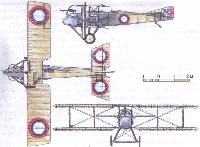 |
А.Шепс - Самолеты Первой мировой войны. Страны Антанты
|
| Разведчик/истребитель SPAD SA.2 A2 4-го авиаотряда русской армии (1915г.)
|
 |
В.Кондратьев - Самолеты первой мировой войны
|
| Спад А2, ВВС России, 1917г.
|
 |
А.Шепс - Самолеты Первой мировой войны. Страны Антанты
|
| Разведчик/истребитель SPAD SA.4 A2 ВВС Франции (1916г.)
|
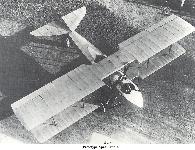 |
Сайт - Pilots-and-planes /WWW/
|
| The unusual SA.1 was the first of many SPAD fighter designs by Louis Bechereau.
|
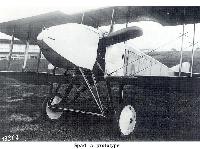 |
Сайт - Pilots-and-planes /WWW/
|
| Spad A prototype
|
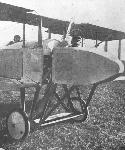 |
Jane's All The World Aircraft 1919 /Jane's/
|
| Near View of the "Front-gun" Spad A.2 fighter with the gunner in place. The position seems unenviable, despite the wire guard. A.2s and few later A.4s served briefly with French and Russian forces.
|
 |
Сайт - Pilots-and-planes /WWW/
|
| Французский "Спад" A1. An early production S.A-1
|
 |
Сайт - Pilots-and-planes /WWW/
|
| S.12
|
 |
Сайт - Pilots-and-planes /WWW/
|
| SPAD SA.2 serial S.17 with pillar-type gun mount
|
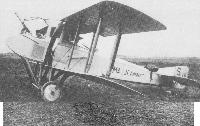 |
W.Green, G.Swanborough - The Complete Book of Fighters
|
| 'MA JEANNE' was one of forty-two Spad A.2s that served with the French Aviation Militaire. The forward nacelle was movable and could be rotated downward to provide access to the engine
|
 |
Сайт - Pilots-and-planes /WWW/
|
| Spad A-2, serial S.19 of an unidentified French unit, carried the name "MA JEANNE" (My Jean) on the fuselage side in Black
|
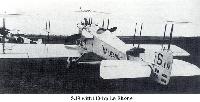 |
Сайт - Pilots-and-planes /WWW/
|
| S.19 with 110 hp Le Rhone
|
 |
Сайт - Pilots-and-planes /WWW/
|
| S.31
|
 |
В.Кондратьев - Самолеты первой мировой войны
|
| "Спад" А4, построенный во Франции по российскому заказу. (Spad A-2 S.46 with the Russian aviation service)
|
 |
Сайт - Pilots-and-planes /WWW/
|
| This Spad A-2 of the imperial Russian Air Service was equipped with skis for operations from snow covered airfields
|
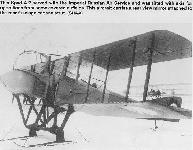 |
Сайт - Pilots-and-planes /WWW/
|
| This Spad A.2 served with the Imperial Russian Air Service and was fitted with skis for operations from snow covered airfields. This aircraft carries a rear view mirror attached to the rear fuselage cabane strut
|
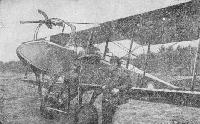 |
В.Шавров - История конструкций самолетов в СССР до 1938 г.
|
| Самолет "Спад" с откидной передней кабиной
|
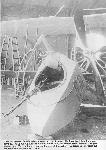 |
Сайт - Pilots-and-planes /WWW/
|
| Стойки гондолы крепились к шасси на шарнирах. Это позволяло открывать двигательный отсек для ремонта. (The front nacelle of the Spad A.2 pivoted around its lower attachment points to the undercarriage. The upper support struts detached allowing the nacelle to be lowered for engine maintenance. The small wire screen at the rear of the cockpit was designed to protect the observer from the propeller)
|
 |
М.Маслов - Русские самолеты Первой Мировой /Эксмо/
|
| Сборка и ремонт военных самолетов в период Первой мировой войны велись в специализированных авиапарках (полевых ремонтных авиазаводах), которые комплектовались необходимым техническим персоналом и оборудованием. На снимке представлена сборочная мастерская 6-го авиапарка, размещенного в городе Львов в 1916 г. Узнаваемы самолет «Спад» SA-2 с отстыкованной передней кабиной воздушного стрелка и фюзеляж полутораплана «Ньюпор-X»
|
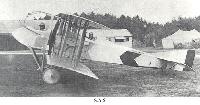 |
Сайт - Pilots-and-planes /WWW/
|
| S.A-2
|
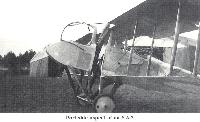 |
Сайт - Pilots-and-planes /WWW/
|
| Port-side aspect of an S.A-2
|
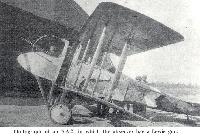 |
Сайт - Pilots-and-planes /WWW/
|
| Photograph of an S.A-2, in which the observer has a Lewis gun
|
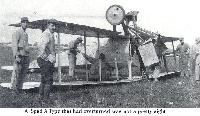 |
Сайт - Pilots-and-planes /WWW/
|
| A Spad A Type that had overturned was not a pretty sight
|
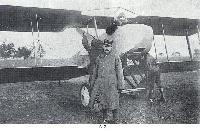 |
Сайт - Pilots-and-planes /WWW/
|
| A-2
|
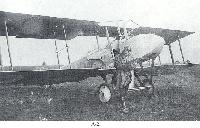 |
Сайт - Pilots-and-planes /WWW/
|
| A-2
|
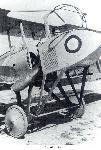 |
Сайт - Pilots-and-planes /WWW/
|
| Spad S.A-2
|
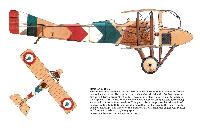 |
Сайт - Pilots-and-planes /WWW/
|
| SPAD S.A-2, 1915
|
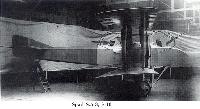 |
Сайт - Pilots-and-planes /WWW/
|
| Spad S.A-3, S.40
|
 |
Сайт - Pilots-and-planes /WWW/
|
| This Russian S.A-4 fell into Austro-Hungarian hands on June 28 1917
|
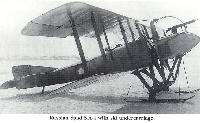 |
Сайт - Pilots-and-planes /WWW/
|
| A Ukrainian (formerly Russian) biplane of the Spad biplane type, with the airscrew in the middle of the body. Note should be taken of the special skids for running on snow. The unenviable position of the gunner in front of the propeller is clearly illustrated!
|
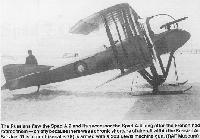 |
Сайт - Pilots-and-planes /WWW/
|
| The Russians flew the Spad A.2 and its sucessor the Spad A.4 long after the French had retired them - chiefly because there was a chronic shortage of aircraft within the Russian Air Service. This aircraft (serial S.79) is armed with a .303 Lewis machine gun
|
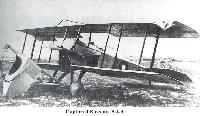 |
Сайт - Pilots-and-planes /WWW/
|
| Captured Russian S.A-4
|
 |
В.Кондратьев - Самолеты первой мировой войны
|
| Российский "Спад" А4 с откинутой на шарнирах для осмотра двигателя передней кабиной.
|
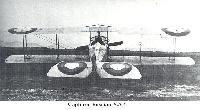 |
Сайт - Pilots-and-planes /WWW/
|
| Captured Russian S.A-4
|
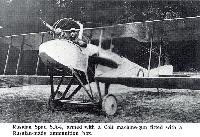 |
Сайт - Pilots-and-planes /WWW/
|
| Russian Spad S.A-4, armed with a Colt machine-gun fitted with a Russian-made amunition box
|
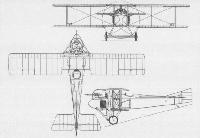 |
W.Green, G.Swanborough - The Complete Book of Fighters
|
| The SA.2 saw service with both the Aviation Militaire and the Russian Imperial air arm.
|
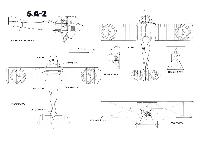 |
Сайт - Pilots-and-planes /WWW/
|
|
|
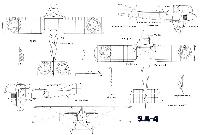 |
Сайт - Pilots-and-planes /WWW/
|
|
|
 |
В.Кондратьев - Самолеты первой мировой войны
|
| SPAD A4
|

